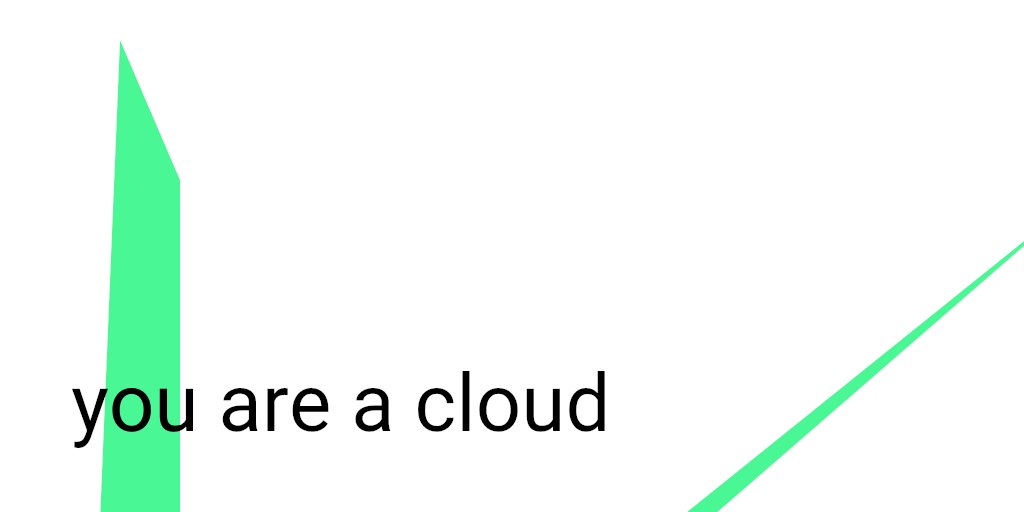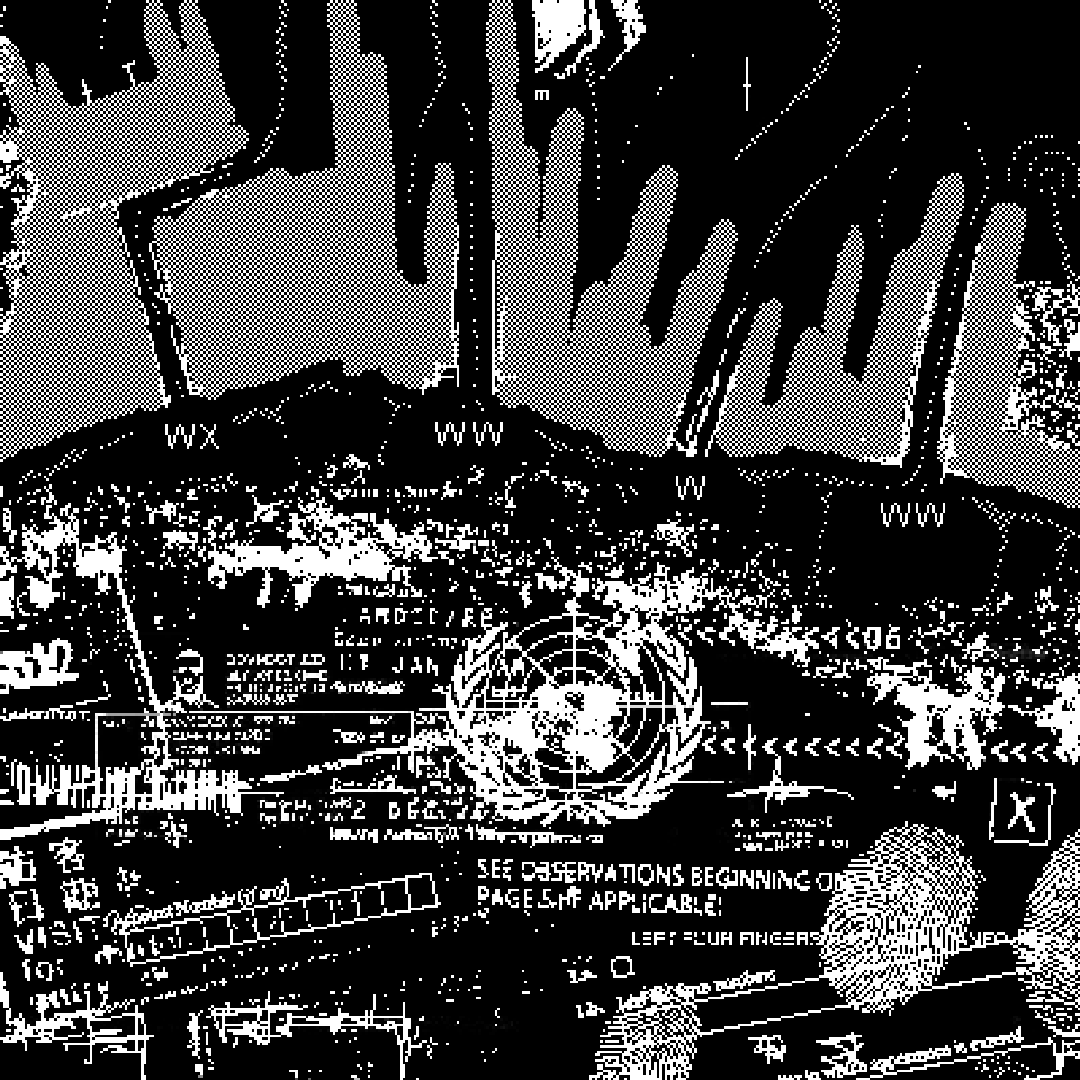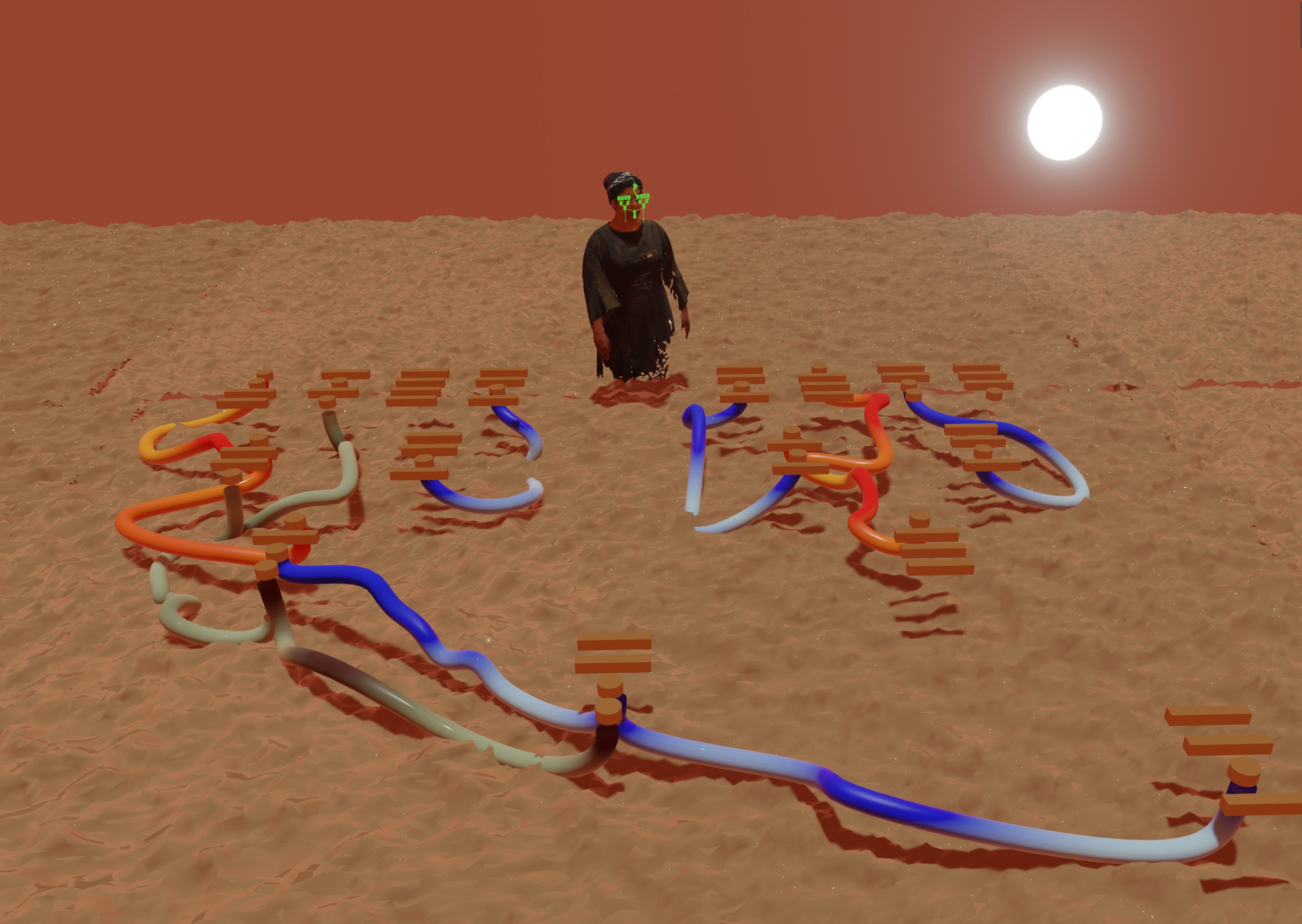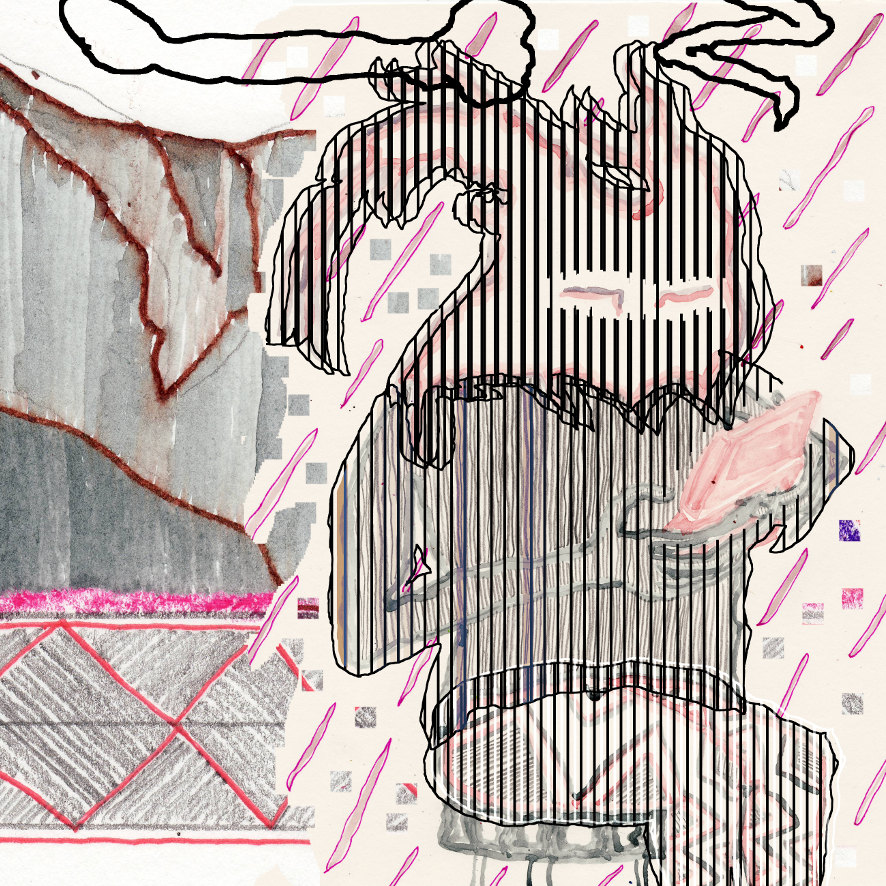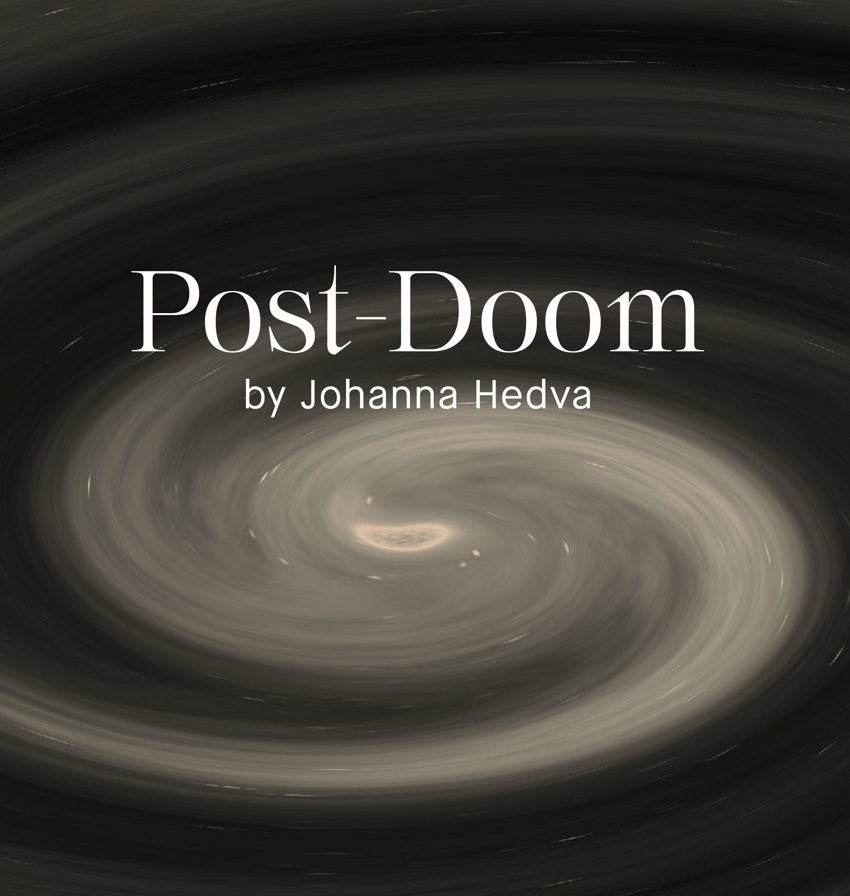
Call for Web Residencies No 14
For Akademie Schloss Solitude’s Call for Web Residencies No. 14, we invited artist and musician Johanna Hedva as curator. Moving away from all-encompassing dystopian future scenarios, »Post-Doom« explores how the perception of a lost present is inscribed in and reproduced in our everyday experiential spaces. As a seductive counterpart to this seemingly hopeless approaching terminal sate (or standstill), Hedva calls for us to rethink beginnings, new multiple entry points, and experiences that reveal the longing for a whole, unmediated potential of our present and future.
Open the Artworks
Johanna Hedva (b. 1984) is a Korean-American writer, artist, musician, and astrologer, who was raised in Los Angeles by a family of witches, and now lives in Los Angeles and Berlin. Hedva’s practice cooks magic, necromancy, and divination together with mystical states of fury and ecstasy. There is always the body – its radical permeability, dependency, and consociation – but the task is how to eclipse it, how to nebulize it, and how to cope when this inevitably fails. Ultimately, Hedva’s work, no matter the genre, is different kinds of writing, whether it’s words on a page, screaming in a room, or dragging a hand through water.
https://johannahedva.comHedva is the author of the novel On Hell (2018), which was named one of Dennis Cooper’s favorites of 2018. Their new book, Minerva the Miscarriage of the Brain, documents a decade of work in the form of essays, poems, and performances, and was published in September 2020 by Sming Sming and Wolfman Books. Their first solo exhibition, God Is an Asphyxiating Black Sauce, opened in summer 2020 at Klosterruine Berlin. Their work has been shown at The Institute of Contemporary Arts in London, Institute of Cultural Inquiry in Berlin, Performance Space New York, the LA Architecture and Design Museum, and the Museum of Contemporary Art on the Moon.
Hedva has written about the political and mystical capacities of Nine Inch Nails, Sunn O))), and Lightning Bolt; the legacy of Susan Sontag; ancient Greek tragedies; and the revolutionary potential of illness. Their writing has appeared in Triple Canopy, Frieze, The White Review, Art Practical, Ignota, Die Zeit, and is anthologized in Whitechapel: Documents of Contemporary Art. Their essay “Sick Woman Theory,” published in 2016 in Mask, has been translated into six languages, and their activism toward accessibility, as outlined in their »Disability Access Rider,« has been influential across a wide range of fields. Hedva received their BA in design from UCLA’s School of Arts and Architecture, and their MFA in art and MA in aesthetics and politics from California Institute of the Arts. They have been a resident at Amplify Berlin, mentored by Pan Daijing, and a fellow with at land’s edge, in Los Angeles, mentored by Fred Moten.
Their EP The Sun and the Moon was released in March 2019; two of its tracks were played on the moon. Their LP, Black Moon Lilith in Pisces in the 4th House, a doom-metal guitar and voice performance influenced by Korean shamanist ritual, will be released in January 2021 on crystalline morphologies and Sming Sming.
Juror's Statement by Johanna Hedva — Jan 11, 2021
It is my delight to announce the four residents for the »Post-Doom« Web Residency: Shirin Fahimi, Danae Tapia, Peter Polack, and Uma Breakdown. A further congratulations goes to the four who made the shortlist: AM Kanngieser, Xenia Taniko, Rebecca Merlic, and Sînziana Păltineanu. After such a rough year, which called on all of us to think and act toward interdependency, I was spurred on by the many brilliant proposals, and humbled at the opportunity to be acquainted with so many vital and dynamic practices. It was a very difficult process to cull the four finalists from 279 applications. The jury emphasized how the project responded to the theme, and how it addressed a specific community or set of concerns within that framework; we hoped to see a convergence of the very-largely scaled to the very particular and intimate. As per the call, we prioritized proposals that centered accessibility. There were many outstanding projects, but we passed on them if they did not address accessibility as a primary concern, methodology, and politic. Last, we valued projects that seemed to bring much-needed support to the artist’s practice toward new expressions of exploration, research, and making. I am looking forward to seeing what the four residents will create during their residencies, and am grateful to the Akademie Schloss Solitude for inviting me into their community for this short time.Web Residents
Digital Witchcraft – Automated Oracular PoetryDanae Tapia / Rotterdam, The Netherlands
Danae Tapia will produce an online exhibition based on the oracular poetry that her Digital Witchcraft bot has been creating over the past few months. This bot is coded in a grammar-generative language called Tracery and uses concepts from a corpus of the artist’s own dreams and exercises of automatic writing. It is an artistic instrument of posthuman literature in which the unconscious meets the computational realm.
The Endless Hallucinatory Love of the Riders at The Long Point of Death
Uma Breakdown / UK
Earlier this year, in a state of grief combined with a downswing of my mental pendulum, Uma Breakdown tried to write a short story. They followed two riders who continually criss-crossed the North American continent via horse and wagon, surveilled by their reconnaissance drone, after some unspoken apocalyptic event. Their riders had a role. The role hidden in the patriarchal, colonial violence of »The Cowboy,« a role of love, palliative, and end-of-life care for animals and humans alike (think of Chloé Zhao’s The Rider and Valeska Grisebach’s Western).
Umm Al-Raml, Sand Narratives
Shirin Fahimi / Toronto, Canada
Umm al Raml’s Sand Narratives is an augmented reality project and a divinatory journey. The fictional persona of Umm al-Raml, the mother of sand, challenges the lack of female prophecy within Islamic literature and addresses divinators’ denunciation within contemporary Iranian society. Umm al Raml will be a fictional persona that appears virtually, and embodies the stories of women who experienced spiritualism.
Doomsday Cartography
Peter Polack / Los Angeles, CA, US
In political spaces and imaginaries, a sense of doom can make cooperative acts of refusal and exodus legible as strategies for survival. But this potential of doom is not exclusive to fugitive communities and undercommons – doom is also an inspiration for systems of control that perpetuate its conditions. This is exhibited by speculative scenarios devised by the Pentagon – from its »Counter-Zombie Dominance« plan to its cinematic descriptions of a future of crime and need in »Urban Future, the Emerging Complexity« – which use doom as a backdrop to strategize counterinsurgency operations.
Shortlist
Between Dying and Death Is a HumAM Kanngieser / Melbourne, Australia
Link
Death Kills the Emperor – a Performance for Audio and Text
Xenia Taniko / Berlin, Germany
Link
DOOM_ROOM – who is game?
Rebecca Merlic / Vienna, Austria
Link
{Valleys of wind}
Sînziana Păltineanu / Berlin, Germany
Link
Call Page @ Akademie Schloss Solitude
www.akademie-solitude.de
Webresidencies
Post-Doom key graphics by Stephan Thiel und Anne Lippert. Website by parmon.
